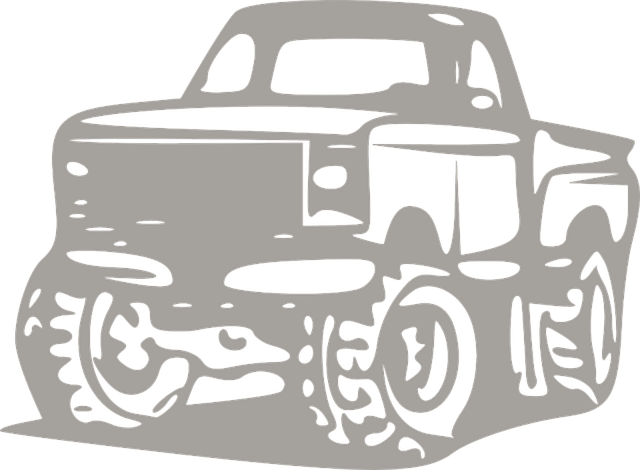Rock rails are vital fleet truck recovery equipment in Brownsville, Texas, due to its challenging terrain. These physical barriers protect trucks and drivers from debris, reducing the risk of severe accidents and damage during off-road incidents. By integrating fixed or mobile rock rails into operations, fleet managers can enhance safety, streamline recovery, and improve vehicle integrity, ensuring quicker turnaround times and overall efficiency in Brownsville's rugged landscape. Professional installation, regular maintenance, and compliance with regional regulations are essential for optimal performance and legal operation.
“In the world of fleet management, ensuring safety and efficient recovery techniques are paramount, especially in challenging terrain. Enter rock rails—a game-changer in truck safety and a valuable investment for fleet operators. This comprehensive guide explores the multifaceted role of rock rails, from their critical function in preventing rollovers to enhancing recovery capabilities. We delve into case studies, like the successful implementation in Brownsville, showcasing the benefits of this equipment. From installation tips to legal standards, understand why rock rails are an essential addition to your fleet’s safety arsenal.”
- Understanding Rock Rails: A Fleet Manager's Guide
- The Role of Rock Rails in Truck Safety and Recovery
- Benefits of Investing in Equipment: Brownsville Case Study
- Types of Rock Rail Systems and Their Applications
- Installation and Maintenance: Ensuring Longevity
- Legal Considerations and Industry Standards for Rock Rails
Understanding Rock Rails: A Fleet Manager's Guide

Rock rails, a vital component of fleet management, serve as robust barriers designed to protect trucks and their drivers during off-road or emergency situations. This equipment is particularly crucial for fleet operations in regions with challenging terrain, such as Brownsville, where navigating rough landscapes can pose significant risks. By employing rock rails, fleet managers can significantly enhance the safety and recovery capabilities of their vehicles.
For fleet truck recovery equipment in Brownsville, rock rails offer a cost-effective solution. They are installed along vulnerable sides of trucks, providing a physical shield against debris, such as rocks, trees, or other obstacles. In case of an accident or unexpected terrain change, these rails prevent the vehicle from flipping over or sustaining severe damage. Understanding their purpose and benefits is essential for fleet managers to make informed decisions regarding off-road operations and ensure the safety of their drivers and vehicles.
The Role of Rock Rails in Truck Safety and Recovery

Rock rails play a pivotal role in enhancing truck safety and recovery, especially in regions with rugged terrain like Brownsville, where fleet managers face unique challenges. These robust structures, strategically positioned along roadsides, act as a critical line of defense against environmental factors and hazardous conditions. By absorbing and deflecting the impact of vehicles veering off the road, rock rails significantly reduce the risk of rollovers and severe accidents.
For fleet truck recovery equipment in Brownsville, rock rails offer a cost-effective solution for preventing costly damage to both vehicles and property. In the event of a mishap, these rails provide stability, minimizing the need for extensive roadside recovery operations. This is particularly beneficial for freight transporters and logistics companies operating within the region, ensuring quicker turnaround times and improved operational efficiency.
Benefits of Investing in Equipment: Brownsville Case Study

Investing in robust fleet truck recovery equipment, such as rock rails, can significantly enhance safety and operational efficiency for any transportation business. The case of Brownsville serves as a compelling example. By equipping their fleet with state-of-the-art recovery tools, the city’s transportation department has witnessed several benefits. First and foremost, these specialized devices have improved road safety by providing swift and effective assistance during accidents or vehicle breakdowns, reducing the risk of secondary collisions.
Moreover, rock rails enable efficient fleet management in challenging terrains. Brownsville’s experience shows that with the right equipment, recovery times are minimized, leading to cost savings and improved customer satisfaction. The city’s decision has not only bettered local transportation but also set a standard for other municipalities, demonstrating the tangible advantages of prioritizing truck recovery equipment, especially in areas prone to rugged landscapes, like many fleet operations across the country.
Types of Rock Rail Systems and Their Applications

Rock rail systems, essential for fleet safety, particularly in regions with rugged terrain like Brownsville, come in various types tailored to specific applications. One common type is the fixed rock rail, typically installed along roadsides to prevent vehicles from veering off and crashing into rocky outcrops or steep drops. These rails are robustly constructed to withstand high-impact collisions, making them ideal for areas prone to erosion and sudden changes in road conditions.
For fleet truck recovery equipment, mobile rock rails offer a flexible solution. These portable systems can be quickly deployed and removed, making them suitable for temporary road construction or emergency situations. In the diverse landscape of Brownsville, where roads may wind through rocky hills or narrow canyons, mobile rock rails provide an effective barrier while allowing for easier access during maintenance or in case of vehicle incidents.
Installation and Maintenance: Ensuring Longevity

Rock rails, a critical component in fleet truck recovery equipment, require proper installation and regular maintenance to ensure longevity. In Brownsville or any urban area with challenging terrain, robust rock rail systems are essential for safeguarding vehicles during roadside assistance and recovery operations. The initial installation should be handled by professionals to guarantee alignment and stability, aligning perfectly with the vehicle’s frame and chassis.
Maintenance involves periodic inspections to check for signs of wear, damage, or misalignment. Regular cleaning and lubrication of components extend their lifespan, while timely replacement of worn-out parts is crucial. For fleet operators in particular, maintaining rock rails is vital not just for equipment durability but also for ensuring safe and efficient truck recovery operations, minimizing downtime, and enhancing overall fleet management efficiency.
Legal Considerations and Industry Standards for Rock Rails

In the context of fleet truck recovery equipment, rock rails play a pivotal role in mitigating risks and enhancing safety during roadside assistance and recovery operations, particularly in areas prone to rugged terrain like Brownsville. Legal considerations for rock rails are guided by regional regulations that dictate the specifications and standards these devices must meet to ensure they function effectively while adhering to safety protocols. Compliance with industry standards is paramount; organizations such as the National Highway Traffic Safety Administration (NHTSA) and the American Society of Mechanical Engineers (ASME) provide guidelines ensuring rock rail systems are designed, manufactured, and tested rigorously.
For fleet operators in Brownsville, understanding these legal considerations and industry standards is crucial when selecting and deploying rock rail equipment for their truck recovery fleets. Incorporating state-of-the-art rock rails that meet or exceed these benchmarks can significantly reduce the risk of damage to vehicles and recovery personnel during challenging rescue scenarios. This not only ensures the safety and efficiency of recovery operations but also safeguards against legal liabilities associated with non-compliant equipment.
Rock rails, as an essential truck safety and recovery equipment, offer numerous benefits to fleet managers. From enhancing vehicle stability on rough terrain to facilitating efficient recovery operations, these robust barriers play a pivotal role in preventing damage and reducing costs. As demonstrated by the successful implementation in Brownsville, investing in rock rail systems can significantly improve fleet safety and operational efficiency. Understanding the various types, installation best practices, and legal standards ensures that fleet managers can make informed decisions to maximize the advantages of this game-changing equipment.



